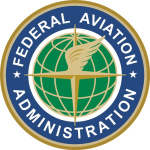- Industry: Government
- Number of terms: 35337
- Number of blossaries: 0
- Company Profile:
A turbocharger that maintains sea level pressure in the induction manifold at altitude.
Industry:Aviation
A turbocharger that maintains sea level pressure in the induction manifold at altitude.
Industry:Aviation
The rating system of aviation gasoline with regard to its antidetonating qualities.
Industry:Aviation
A condition in which a reciprocating engine has exceeded the maximum manifold pressure allowed by the manufacturer. Can cause damage to engine components.
Industry:Aviation
A condition in which an engine has produced more r.p.m. than the manufacturer recommends, or a condition in which the actual engine speed is higher than the desired engine speed as set on the propeller control.
Industry:Aviation
A condition in which a device has reached a temperature above that approved by the manufacturer or any exhaust temperature that exceeds the maximum allowable for a given operating condition or time limit. Can cause internal damage to an engine.
Industry:Aviation
A condition in which an engine has produced more torque (power) than the manufacturer recommends, or a condition in a turboprop or turboshaft engine where the engine power has exceeded the maximum allowable for a given operating condition or time limit. Can cause internal damage to an engine.
Industry:Aviation
That part of total drag created by the design or shape of airplane parts. Parasite drag increases with an increase in airspeed.
Industry:Aviation
A tendency for an aircraft to yaw to the left due to the descending propeller blade on the right producing more thrust than the ascending blade on the left. This occurs when the aircraft’s longitudinal axis is in a climbing attitude in relation to the relative wind. The P-factor would be to the right if the aircraft had a counterclockwise rotating propeller.
Industry:Aviation
